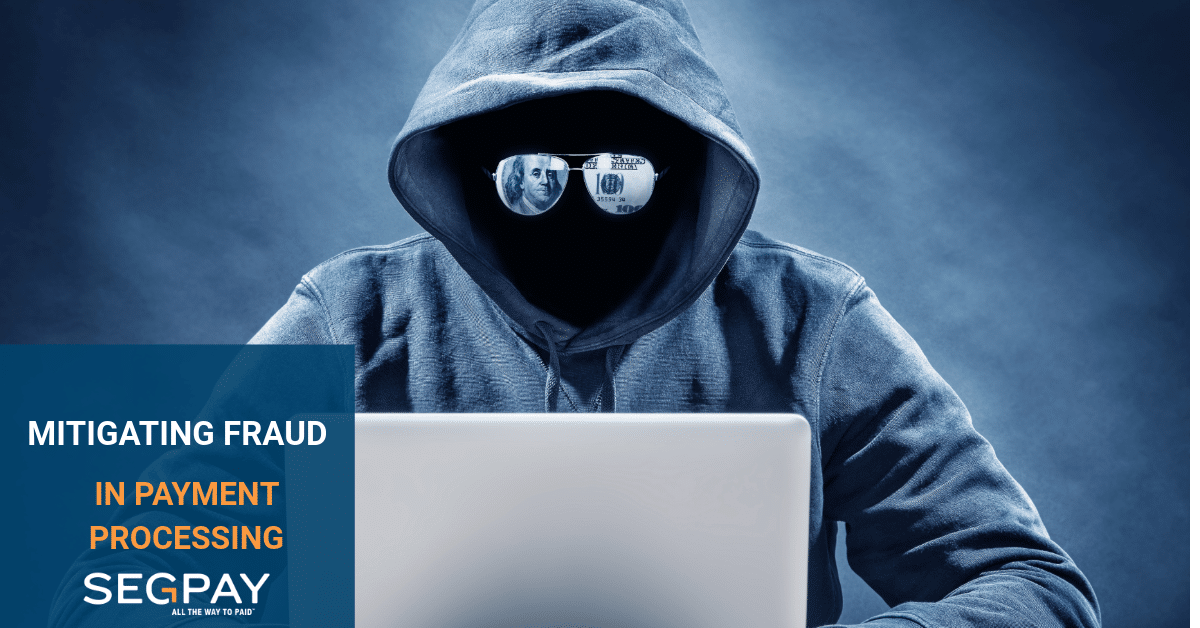- 5 minute read
There has been a steady rise in bank and credit card fraud in recent years, which suggests that bad faith actors have become increasingly sophisticated and audacious in their tactics. Recent studies from The Motley Fool show that a staggering 111,000 Americans fell prey to bank fraud in 2022, a significant rise from the approximately 84,000 reported cases in 2021. Also, incidents of credit card fraud experienced a spike, surging by a substantial 22% in the same time frame.
These stats should be scary for any business that values its customers and bottom line. But where can that potential fear for your company drive forward-thinking protection?
While we can’t speak for you and your business, at Segpay, we have built one of the industry’s most robust fraud protection systems. A robust fraud protection system coalesces strategies that ensure that customer data, funds, and transactions are protected at every point. However, fraud mitigation in payment processing is a team sport. While we have built a solid system that checks unusual activities on our end, merchants and online businesses can employ several strategies to lock on their systems against fraud.
In this post, we will discuss some strategies you, the merchant, can apply to protect yourself and your customers against fraud.
Protecting Your Business Against Fraud
Fraud protection is everybody’s business. And for merchants, simple strategies can help you protect your business against fraud.
Below is a snapshot of some strategies you can implement to protect your business against fraud.
- Know Your Customer (KYC): This is the simplest strategy to employ. It involves getting key personal details of new and existing customers on your platform. This strategy is important because it is your first defense against fraud and bad actors.
- Vet Your Affiliates: Affiliates direct sales to your business, but if you receive bad traffic from affiliates, it can lead to numerous chargebacks and loss of reputation.
- Monitor Constantly and Continuously: You should always look for signs of system compromise or common antics of fraudsters. Your business relies on your vigilance.
- Implement Network Security and Stay PCI-Compliant: PCI-compliance is required to process card transactions on your platform. Not only does it cause you to implement network monitoring and testing strategies, but you also become equipped with the tools to secure your network and protect sensitive customer data.
Why Fighting Fraud is Better When We Work Together
Operative fraud protection requires collaboration between the payment processor and the business it serves. Together, we can beat back the fraudsters if we play our roles effectively. Some of the ways we can do these are;
- Make KYC compulsory: At Segpay, we have a level system for fraud protection. At the front lines, we implement a series of strict KYC and KYB (Know Your Business) protocols that ensure that we collect and hold vital information from merchants using our service. If you’ve experienced our onboarding process, you would know how thorough it can be. The reason is to ensure we only onboard good merchants on our platform. Likewise, you should take your customer acquisition process seriously as a merchant. KYC is vital to fighting fraud; do not compromise on this task, as it is your first line of defense. If you are unsure how to implement proper KYC for your business, you should read our ABCs of KYC guide.
- Implement Robust Monitoring Strategies: Our approach utilizes a robust network monitoring and security toolset that also plays a great role in constantly monitoring and fending off attacks in real-time. We are constantly implementing adaptive and dynamic security measures to counter emerging threats effectively. As a business, you can do the same. While we offer some of the same protection to businesses using our service, it’s also important that you implement some form of fraud monitoring for your platform. Beyond the obvious benefits of data protection and loss avoidance, you would build a solid reputation with your customers as a business that protects its own.
- Vet and Verify: If you’ve got your KYC process in place, you should also implement protocols that guarantee the legitimacy of the customer at all times. Implementing multi-factor authentication, secure login procedures, and other verification measures can collectively enhance the overall security of your business. We know it can sometimes seem like easy is better, but when fraud strikes, the loss can become so devastating that you realize that doing hard things the hard way leads to success for all parties.
- Educate: Just like we are doing here and now. As a team, we all should ensure that we continue the conversation on fraud awareness and promote strategies to protect each other collectively. Educate your team on social engineering tactics and protection measures and do the same for customers. Educating employees and customers about potential fraud risks and prevention measures contributes to a more informed and vigilant community. Awareness is a critical component of any effective fraud protection strategy.
The Bottom Line: Prioritizing Collaborative Fraud Protection
Collaboration and shared responsibility are essential for effective fraud protection. Working together enhances defense against suspicious activities, safeguards interests, builds customer trust, and secures the merchant’s revenue, ultimately creating a more resilient system.
For more learning resources on how to build formidable fraud protection at your business, you should watch this video.
Want to learn more about Fraud Protection?
Contact us today Reach out to us with your questions at [email protected] and we can share more about how you can protect yourself and your customers against fraud.



